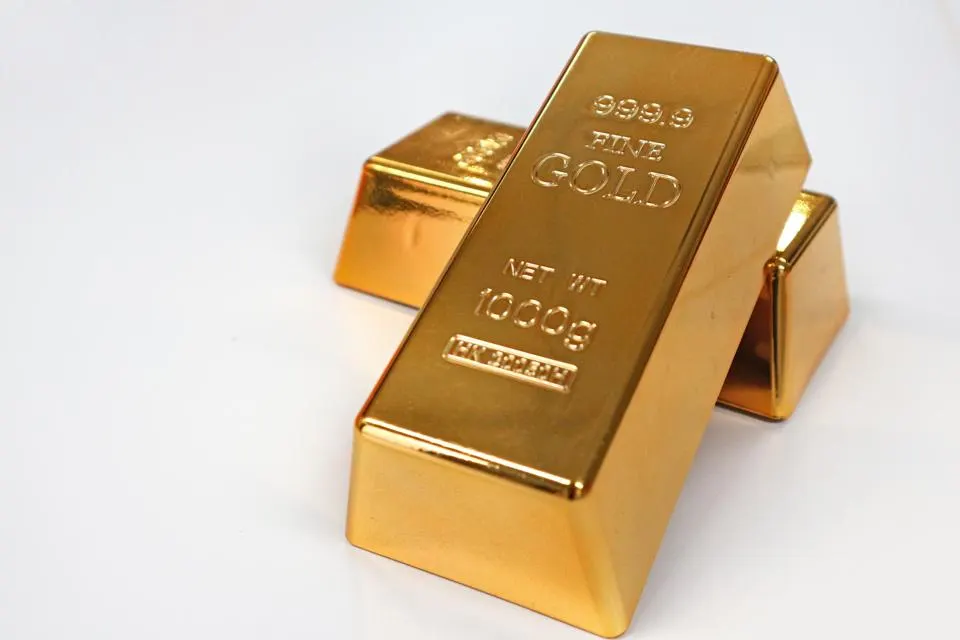The History of Gold Bars: Why They Remain a Timeless Asset
The History of Gold Bars: Why They Remain a Timeless Asset
Introduction
Gold has captivated humanity for millennia, symbolizing wealth, power, and stability across cultures and eras. Among its various forms, gold bars stand out as a cornerstone of economic systems and personal investments. From ancient civilizations smelting rudimentary ingots to modern refineries producing standardized bullion, the evolution of gold bars reflects our enduring fascination with this precious metal. In this post, we'll delve into the rich history of gold bars and explore why they continue to be a timeless asset in today's volatile financial landscape. Whether you're a seasoned investor or new to precious metals, understanding this legacy can inform smarter decisions about incorporating gold into your portfolio.
Ancient Origins: The Birth of Gold Bars
The story of gold bars begins in the cradle of civilization. Archaeological evidence suggests that gold was first smelted in ancient Egypt around 3600 BC, where it was revered as a divine metal associated with the sun god Ra. Early Egyptians melted gold nuggets found in riverbeds into simple bars or ingots, making them easier to transport and trade. By 3000 BC, similar practices emerged in Mesopotamia, where gold bars facilitated commerce in burgeoning city-states like Sumer.
Around 2000 BC, the Lydians in modern-day Turkey advanced this further by creating electrum ingots—a natural alloy of gold and silver. These early bars weren't purely gold but served as proto-currency, stamped with royal seals to guarantee weight and purity. This innovation laid the groundwork for standardized bullion, transforming gold from a mere commodity into a medium of exchange. In ancient Egypt, hieroglyphs from 2600 BC describe gold as "more plentiful than dirt," underscoring its abundance and cultural significance in jewelry, tombs, and trade.
As empires rose and fell—from the Egyptians and Sumerians to the Greeks and Romans—gold bars became symbols of imperial might. The Romans, for instance, mined vast quantities in Spain and used bars to fund military campaigns, establishing gold as a global standard for wealth storage.
Medieval and Renaissance Developments: Refinement and Standardization
The Middle Ages saw gold bars evolve amid Europe's feudal economies. Alchemists and mints refined purification techniques, producing purer ingots for royal treasuries and merchant guilds. By the 13th century, Italian city-states like Venice and Florence used gold bars in international trade, often assayed and marked for authenticity.
The Renaissance brought further advancements. In the 16th century, Spanish conquistadors flooded Europe with gold from the Americas, leading to the creation of larger bars for efficient storage. However, it was in mid-17th century England where modern gold bars truly took shape. The Goldsmiths' Company in London began producing standardized bars, hallmarked for purity—typically 22 karats or finer—setting precedents for today's 99.99% pure "good delivery" bars. This era also saw gold bars play pivotal roles in banking, with institutions like the Bank of England using them as reserves.
Modern Era: Gold Bars in the Industrial Age and Beyond
The 19th century's gold rushes—in California (1849), Australia (1851), and South Africa (1886)—dramatically increased supply, leading to more sophisticated refining processes. The establishment of the London Gold Market in 1919 formalized trading, with 400-ounce bars becoming the international standard.
The 20th century was tumultuous for gold. The Gold Standard, adopted by many nations, tied currencies to gold bars until its abandonment during economic crises like the Great Depression and World War II. In 1933, the U.S. government confiscated private gold to bolster reserves, only legalizing ownership again in 1975. Today, central banks hold vast gold bar reserves—over 33,000 tonnes globally—as a hedge against fiat currency fluctuations.
In the digital age, gold bars have adapted. Investors can now buy fractional bars or even digital representations backed by physical bullion. Companies like Gold Land Merchants Limited, accessible at https://goldlandmerchantslimited.com/, position themselves as major suppliers of pure gold across regions including South America, India, Europe, and Asia, offering options for those seeking reliable sources.
Why Gold Bars Remain a Timeless Asset
Despite the rise of cryptocurrencies and stock markets, gold bars endure as a premier investment for several compelling reasons:
Store of Value: Gold has maintained purchasing power for thousands of years, outlasting empires and currencies. Unlike paper money, it isn't subject to inflation or devaluation by governments.
Hedge Against Uncertainty: In times of economic turmoil, geopolitical tensions, or market crashes, gold prices often rise. It acted as a safe haven during the 2008 financial crisis and the COVID-19 pandemic.
No Counterparty Risk: Physical gold bars represent ownership without relying on banks or institutions. You hold tangible value that can't default.
Diversification: Adding gold to a portfolio reduces volatility, as it often moves inversely to stocks and bonds.
Global Demand and Liquidity: Gold's universal appeal ensures easy buying and selling worldwide. Industrial uses in electronics and jewelry further bolster its value.
Inflation Protection: As living costs rise, gold historically appreciates, preserving wealth over generations.
These attributes make gold bars not just a relic of the past but a strategic asset for the future.
Conclusion
The history of gold bars is a testament to human ingenuity and the metal's intrinsic allure. From ancient Egyptian ingots to contemporary bullion, they've evolved while retaining their core appeal as symbols of enduring wealth. In an era of digital assets and economic unpredictability, gold bars offer stability and security that few investments can match. If you're considering adding this timeless asset to your holdings, research reputable suppliers and consult financial advisors to align with your goals.
Gold bars,History of gold,Gold investment,Bullion history,Timeless asset,Gold bullion,Precious metals,Gold ingots,Safe haven asset,Inflation hedge,Gold reserves,Ancient gold,Modern gold bars,Wealth preservation,Gold suppliers.
Read More
0
Categories:
Blog

